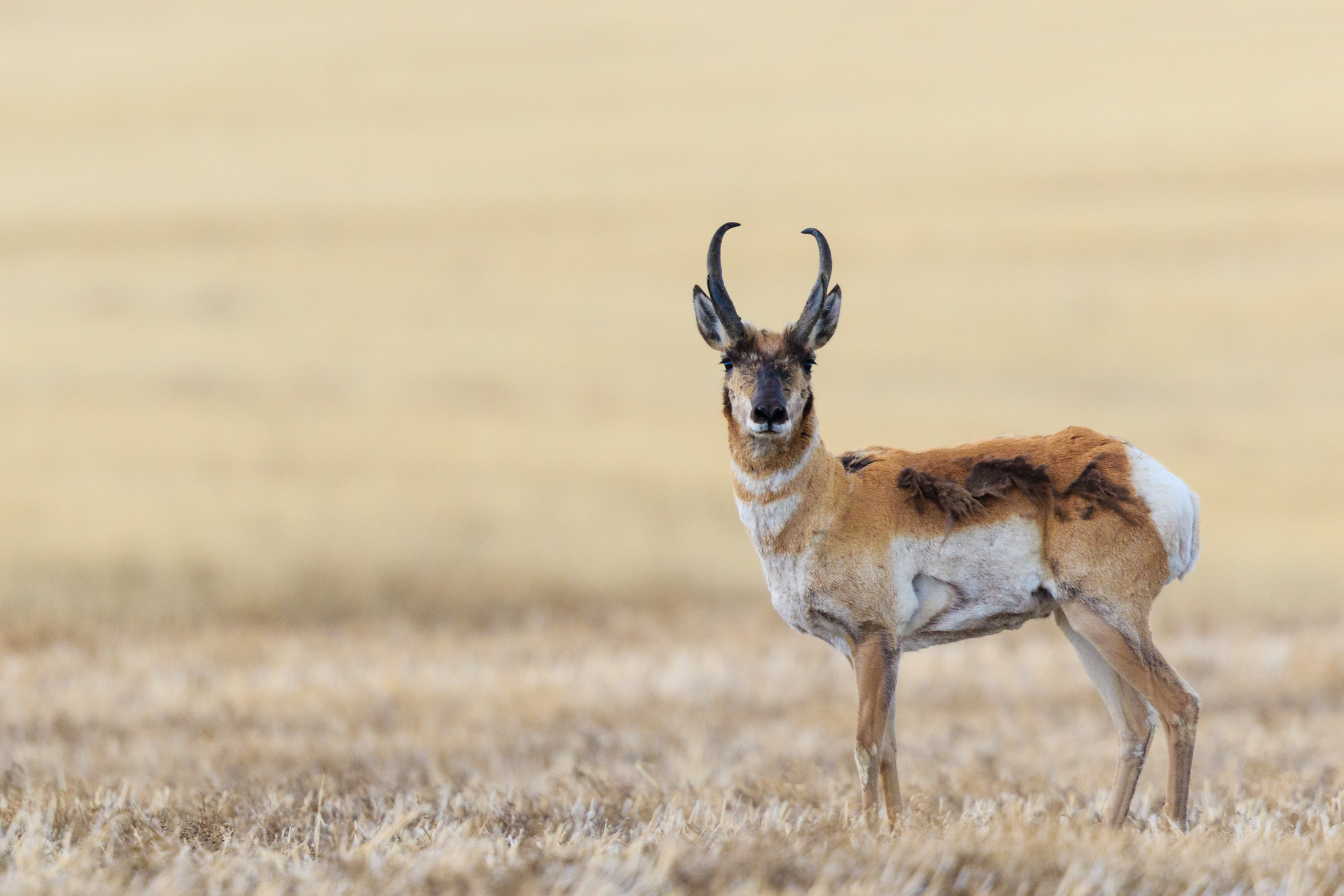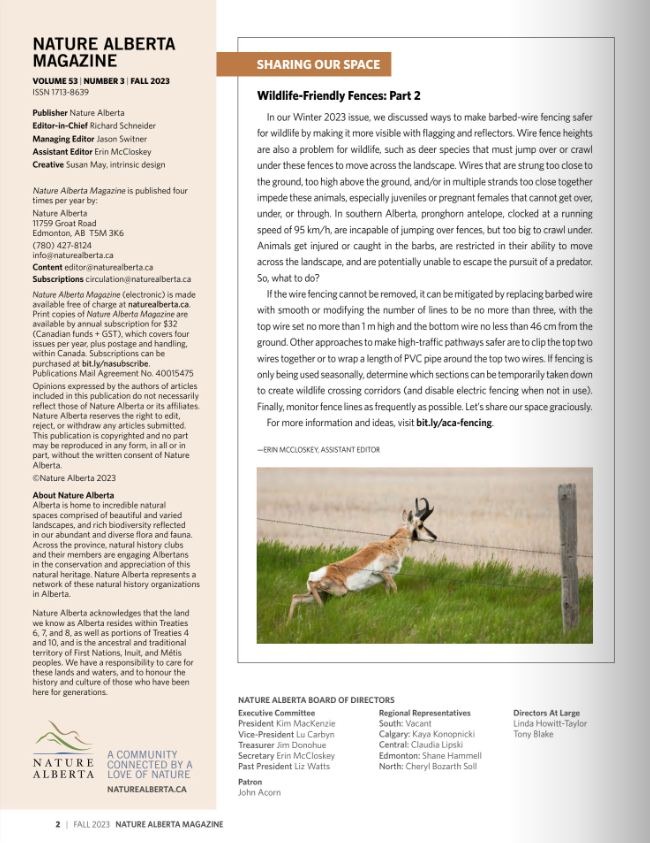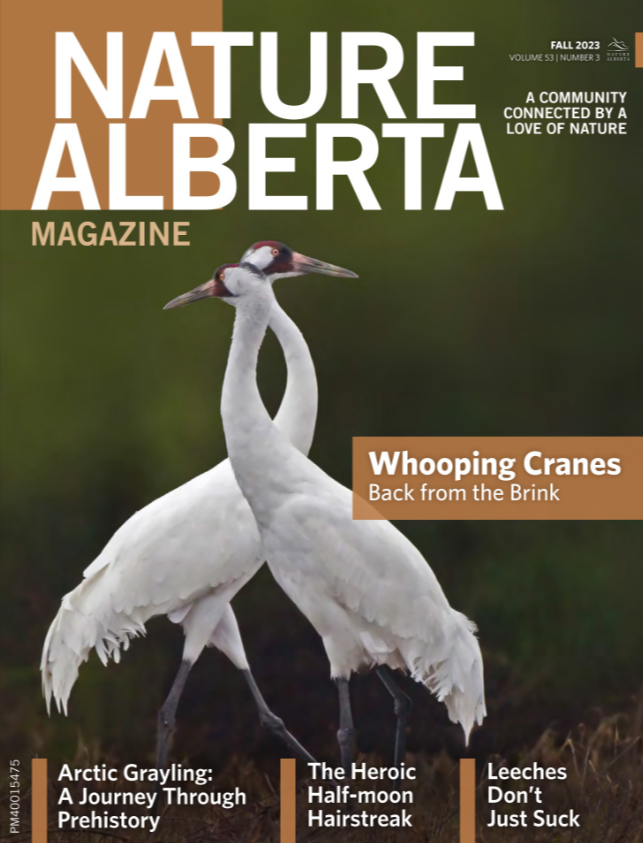Sharing Our Space: Wildlife-Friendly Fences Part 2
15 May 2024

BY ERIN MCCLOSKEY
In our Winter 2023 issue, we discussed ways to make barbed-wire fencing safer for wildlife by making it more visible with flagging and reflectors. Wire fence heights are also a problem for wildlife, such as deer species that must jump over or crawl under these fences to move across the landscape. Wires that are strung too close to the ground, too high above the ground, and/or in multiple strands too close together impede these animals, especially juveniles or pregnant females that cannot get over, under, or through. In southern Alberta, pronghorn antelope, clocked at a running speed of 95 km/h, are incapable of jumping over fences, but too big to crawl under. Animals get injured or caught in the barbs, are restricted in their ability to move across the landscape, and are potentially unable to escape the pursuit of a predator. So, what to do?
If the wire fencing cannot be removed, it can be mitigated by replacing barbed wire with smooth or modifying the number of lines to be no more than three, with the top wire set no more than 1 m high and the bottom wire no less than 46 cm from the ground. Other approaches to make high-traffic pathways safer are to clip the top two wires together or to wrap a length of PVC pipe around the top two wires. If fencing is only being used seasonally, determine which sections can be temporarily taken down to create wildlife crossing corridors (and disable electric fencing when not in use). Finally, monitor fence lines as frequently as possible. Let’s share our space graciously.
For more information and ideas, visit bit.ly/aca-fencing.
Read the Original Article for this Post
For a richer reading experience, view this article in the professionally designed online magazine with all images and graphs in place.
This article originally ran in the Fall 2023 issue of Nature Alberta Magazine (Vol. 53 | No. 3).


